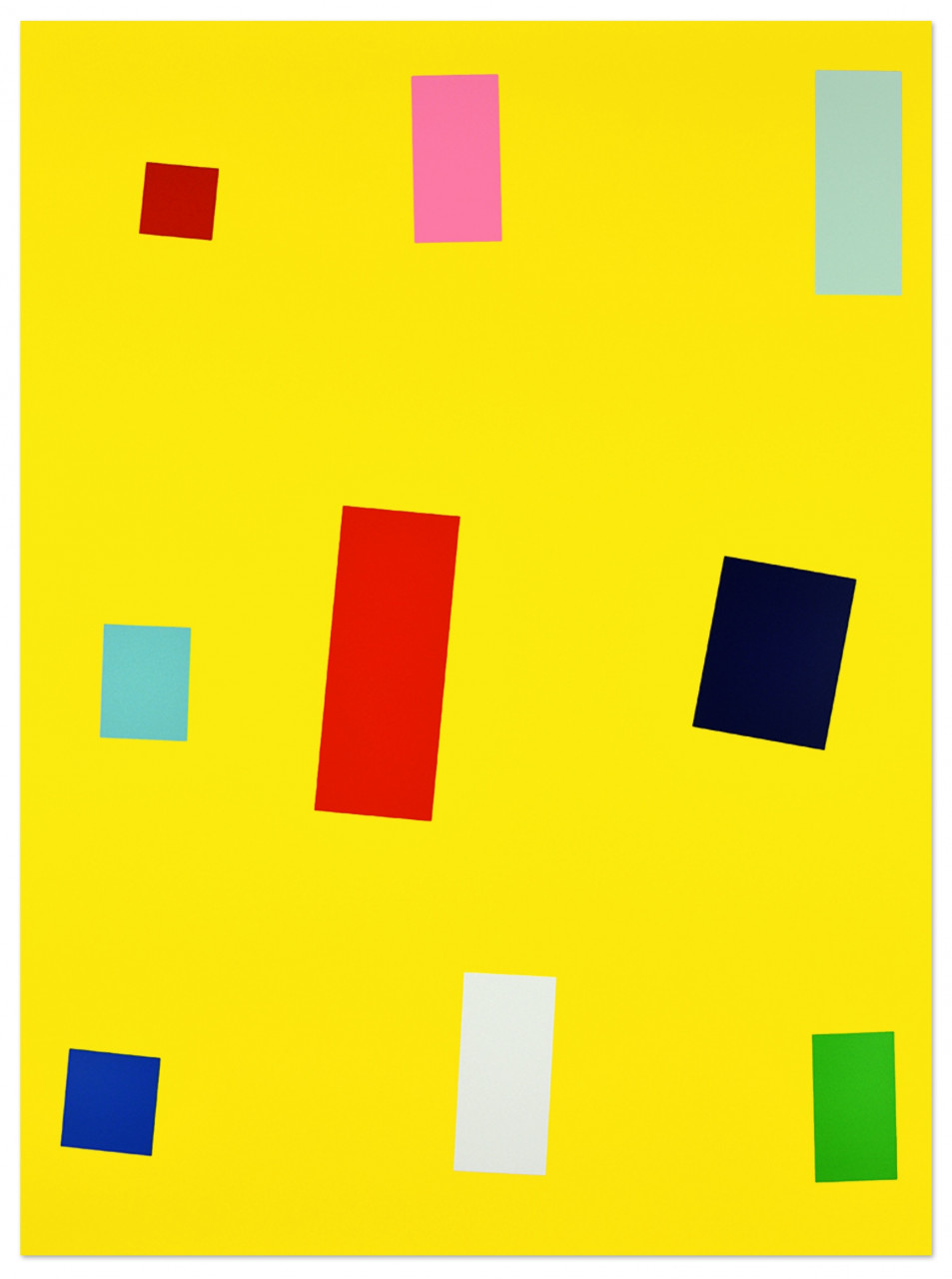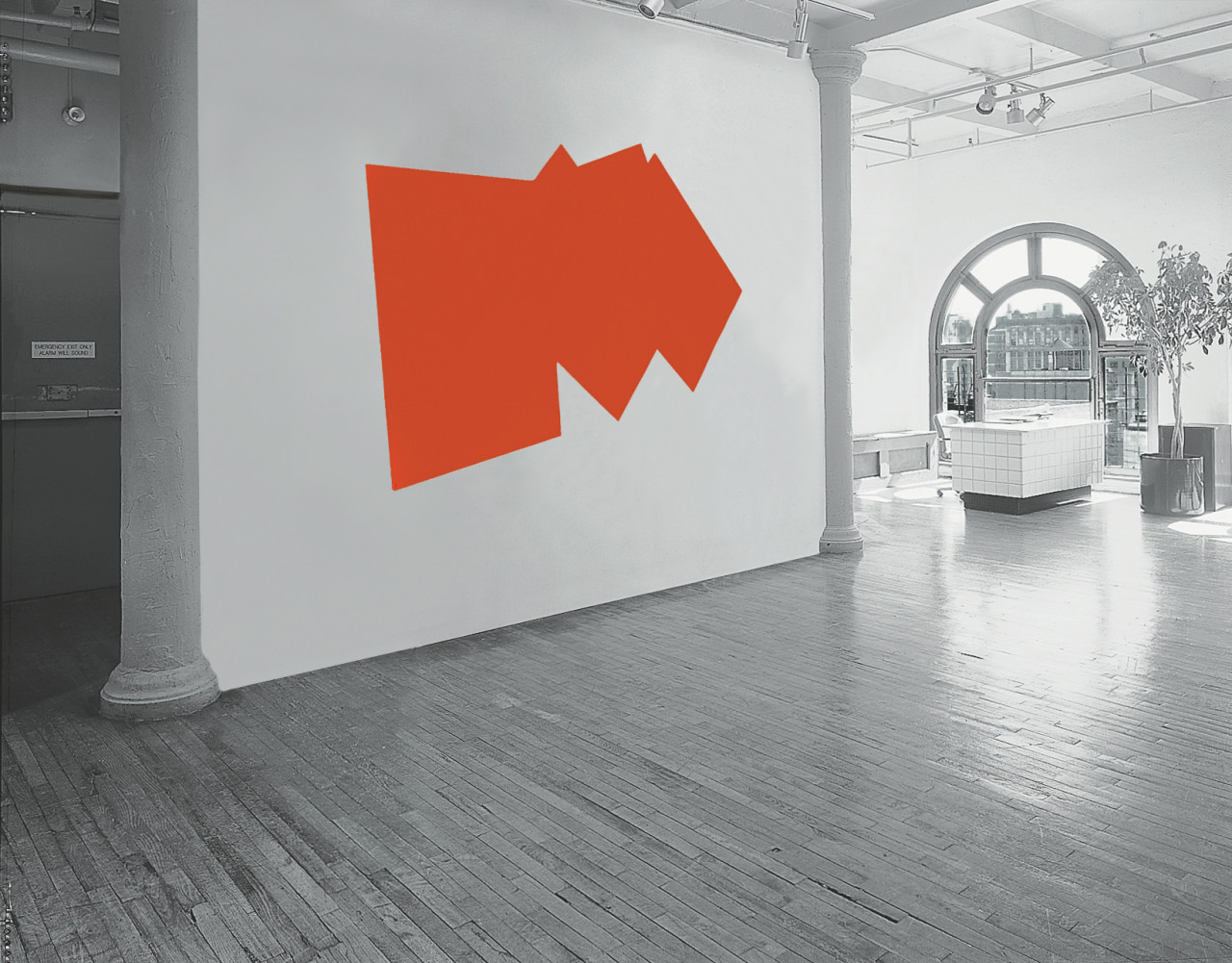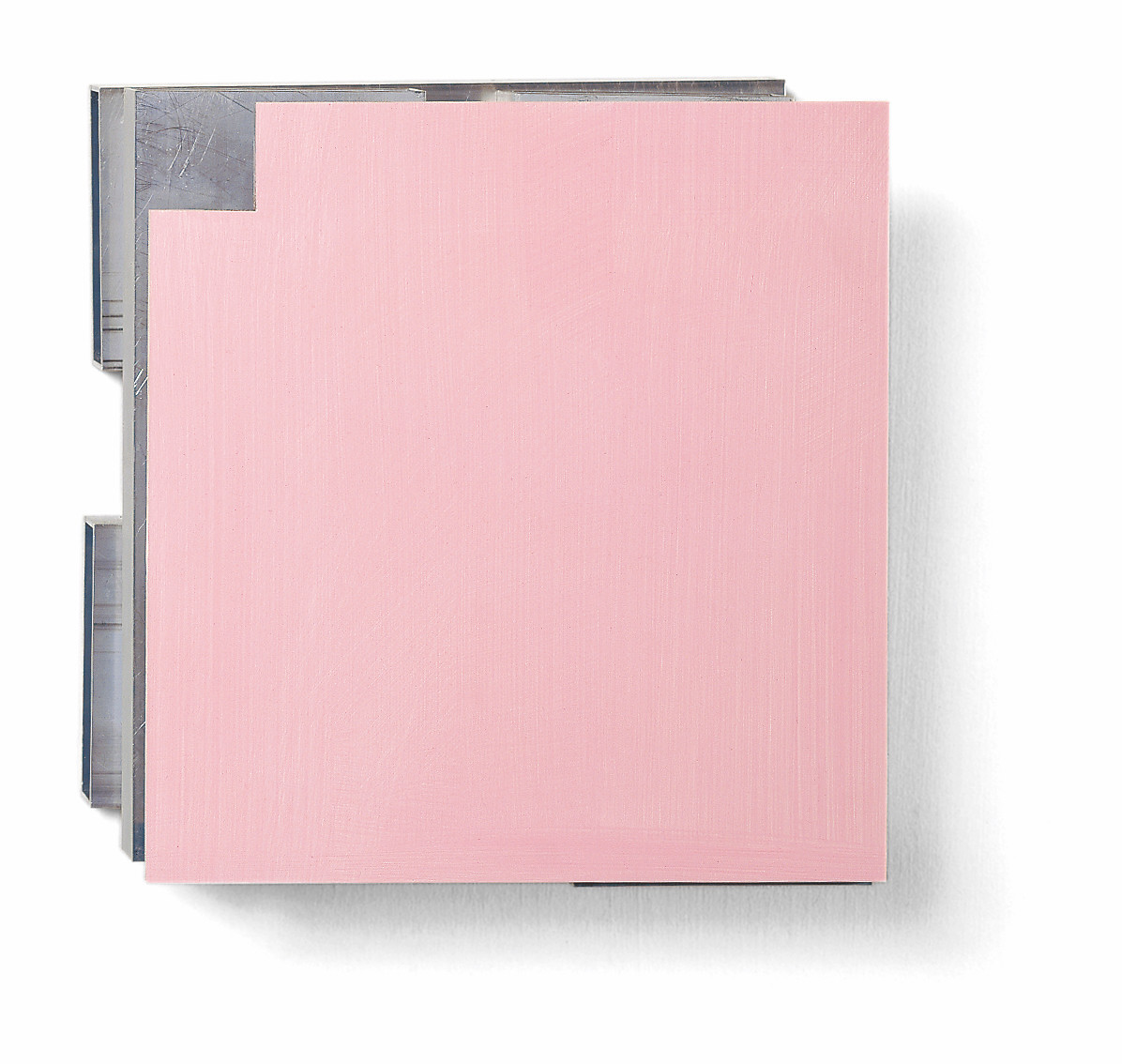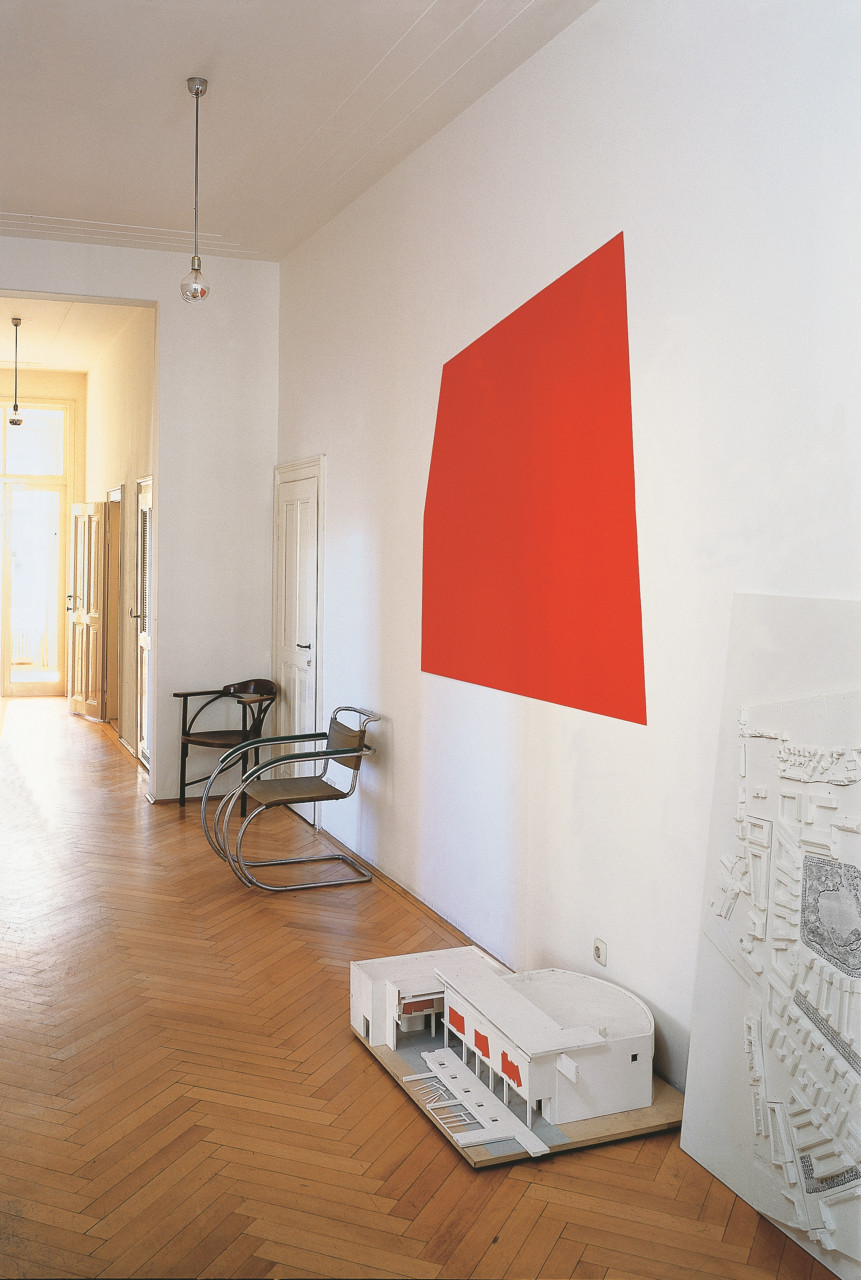Imi Knoebel
Imi Knoebel, born 1940 in Dessau, Germany, lives and works in Düsseldorf. Along with Palermo, he is considered one of the most important German abstract painters of the post-Beuys generation. His work returns to the roots of the concept of painting; it is a consistent exploration of the medium, the conditions it requires and the possibilities it presents. Imi Knoebel's geometric forms are abstracted, often quite directly, from nature and his life experience, including his study of existing artists from the Modernist canon. It is characteristic of Knoebel's experimental, conceptual approach that he undermines geometry with new forms; in his paintings, form and color coalesce into energetic fields.
Imi Knoebel Editions
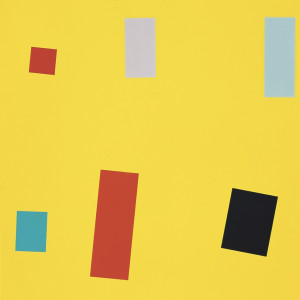
Gelbe Fahne
1999
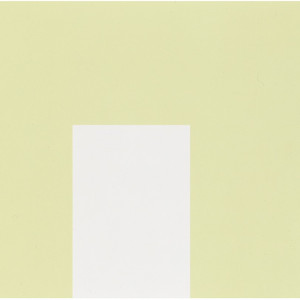
Tür und Tor
1998
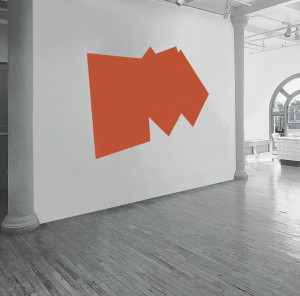
Mennige (Polygon)
1998

IT
1998
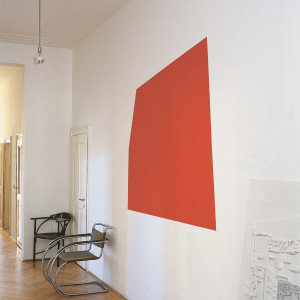
Mennige (Pentagon)
1992
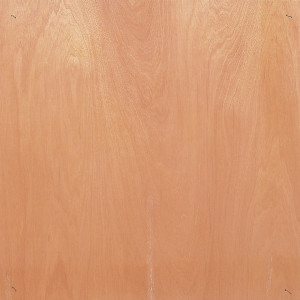
Mennige
1988
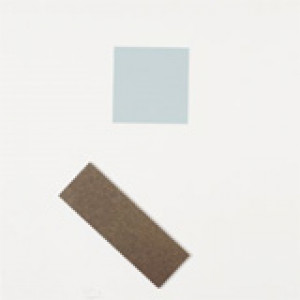
Untitled
1986
Imi Knoebel
Gelbe Fahne
1999
Silkscreen on rag paper, 100 x 73 cm (39¼ x 28¾ in). Edition of 99, signed and numbered on verso.
Imi Knoebel’s edition Gelbe Fahne [Yellow Flag] is characterized by a reduced yet tension-filled composition. Nine rectangular forms appear to float on a monochrome yellow surface, creating a finely balanced interplay between individual presence and collective structure. Despite the formal rigor, the arrangement of the rectangles generates a subtle dynamism that echoes the principles of Constructivist and Minimalist art. The surface’s intense coloration enhances the visual autonomy of the geometric elements and underscores Knoebel’s conceptual engagement with color, form, and space.
EUR 2,700

Imi Knoebel
Tür und Tor
1998
From Sequences
Three-part print: Two silkscreens, printed with phosphorous pigment, and mezzotint, all printed on Rives BFK rag paper. Each print 40 x 50 cm (15¾ x 19¾ in), set signed and numbered on mezzotint. Edition of 60 + X.
Imi Knoebel’s edition Tür und Tor [Door and Gate] unfolds as a rigorously composed sequence of three prints, in which two rectangular forms—A and B—appear in varying arrangements. The series follows a reduced logic: first in the combination A+B, then A in isolation, and finally B. This principle of alternating presence and absence creates a subtle play of positive and negative forms that challenges the boundaries between figure and ground.
Set EUR 3,500
Imi Knoebel
Mennige (Polygon)
1998
From Wall Works
Wall painting in three colour variations (red lead or ferric oxide paint), size variable. Limited to 12 installations, with a signed and numbered certificate (gouache, 100 x 70 cm).
This large-scale wall work edition is part of Imi Knoebel‘s Mennigebilder (or Mennige Bilder), a series of works with irregular polygons resulting from the fusion of rectangular shapes. The title Mennige refers to the anti-rust paint the artist used for his early large-format plywood panels, the first color to enter his oeuvre.
Created for the Wall Works group series, this edition is part of the permanent collection of the Neue Nationalgalerie, Berlin.
Imi Knoebel
IT
1998
Hand-painted acrylic on aluminum construction, 26 x 24.8 x 12.6 cm (10¼ x 9¾ x 5 in). Edition of 24, signed and numbered on verso.
This wall object is a multilayered composition made of stacked aluminum plates, distinguished by varying profiles and material thicknesses. The relief-like arrangement creates a dynamic interplay of light and shadow, lending the geometric structure an almost sculptural quality.
The top aluminum plate of this edition was hand-painted by Imi Knoebel in a monochrome tone, creating a subtle connection between industrial precision and painterly gesture. In this work, Knoebel continues his characteristic exploration of materiality and color field painting by dissolving the boundary between object and image and emphasizing the physical presence of color.
Imi Knoebel
Mennige (Pentagon)
1992
From Wall Works
Wall painting in red lead paint, 164.5 x 197.7 cm (61 x 78 in). Limited to 12 installations, with a signed and numbered certificate (gouache, 102 x 73 cm).
Mennige (Pentagon) by Imi Knoebel is a wall work that uses an irregular pentagon as its central form. The choice of color, the characteristic “red lead” paint called Bleimennige, refers to an industrial primer for steel and iron that Knoebel repeatedly incorporates into his artistic practice.
As a work applied directly to the wall, this edition interacts with the architectural conditions of the space, emphasizing the interplay between autonomous form and spatial context. The clear geometry is not presented in isolation but enters into dialogue with its surroundings, through which Knoebel continues his conceptual engagement with surface, color, and space.
EUR 20,000
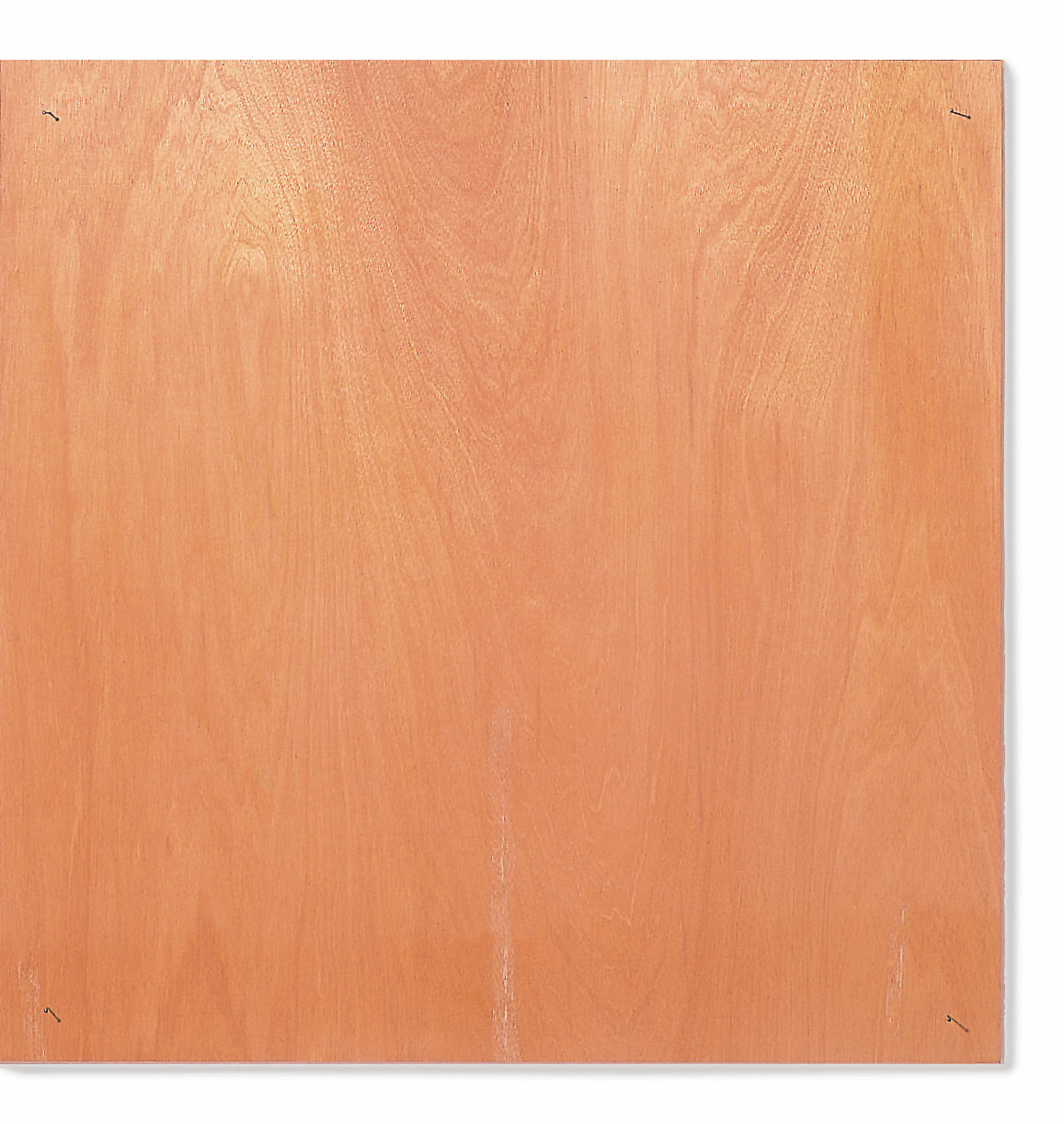
Imi Knoebel
Mennige
1988
Two sheets of plywood, painted with Mennige (red primer) on the inside, nails. 100 x 100 x 1 cm (40 x 40 x ½ in). Edition of 21, signed and numbered.
This edition by Imi Knoebel is a minimal, object-like work that explores the boundaries between painting and sculpture. The title refers to a specific reddish industrial pigment, which, however, remains invisible in the work, as it is enclosed between two plywood panels. By completely concealing the color surface, the autonomy of color is emphasized – it exists, yet remains hidden from view. This deliberate withholding gives the work an enigmatic presence that resists immediate interpretation, instead pointing to the concept of materiality, surface, and concealed depth.
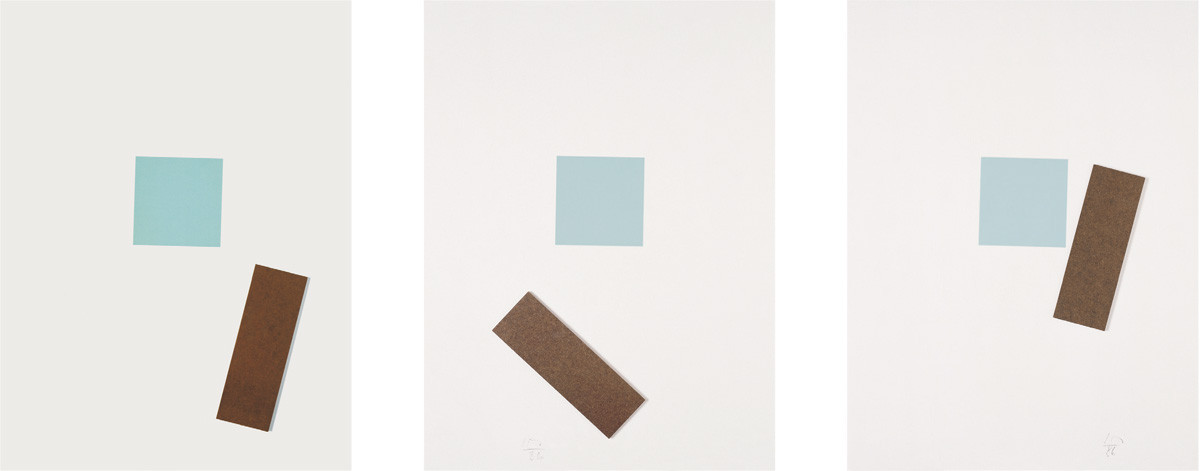
Imi Knoebel
Untitled
1986
From For Joseph Beuys
Lithograph with mounted hardboard on Rives BFK rag paper, 80 x 60 cm. The position of the hardboard varies within the edition. Edition: 90 + XXX, signed on front, numbered on verso.
Imi Knoebel’s edition Untitled (1986) is a reflection on the death of Joseph Beuys. At its center is a solid blue square, reminiscent of Malevich’s Black Square, around which fiberboard panels are arranged in varying configurations. This composition evokes the image of a fixed star and its satellites, with the square potentially symbolizing Beuys’ enduring influence. The panels represent the continued radiance of his ideas.
